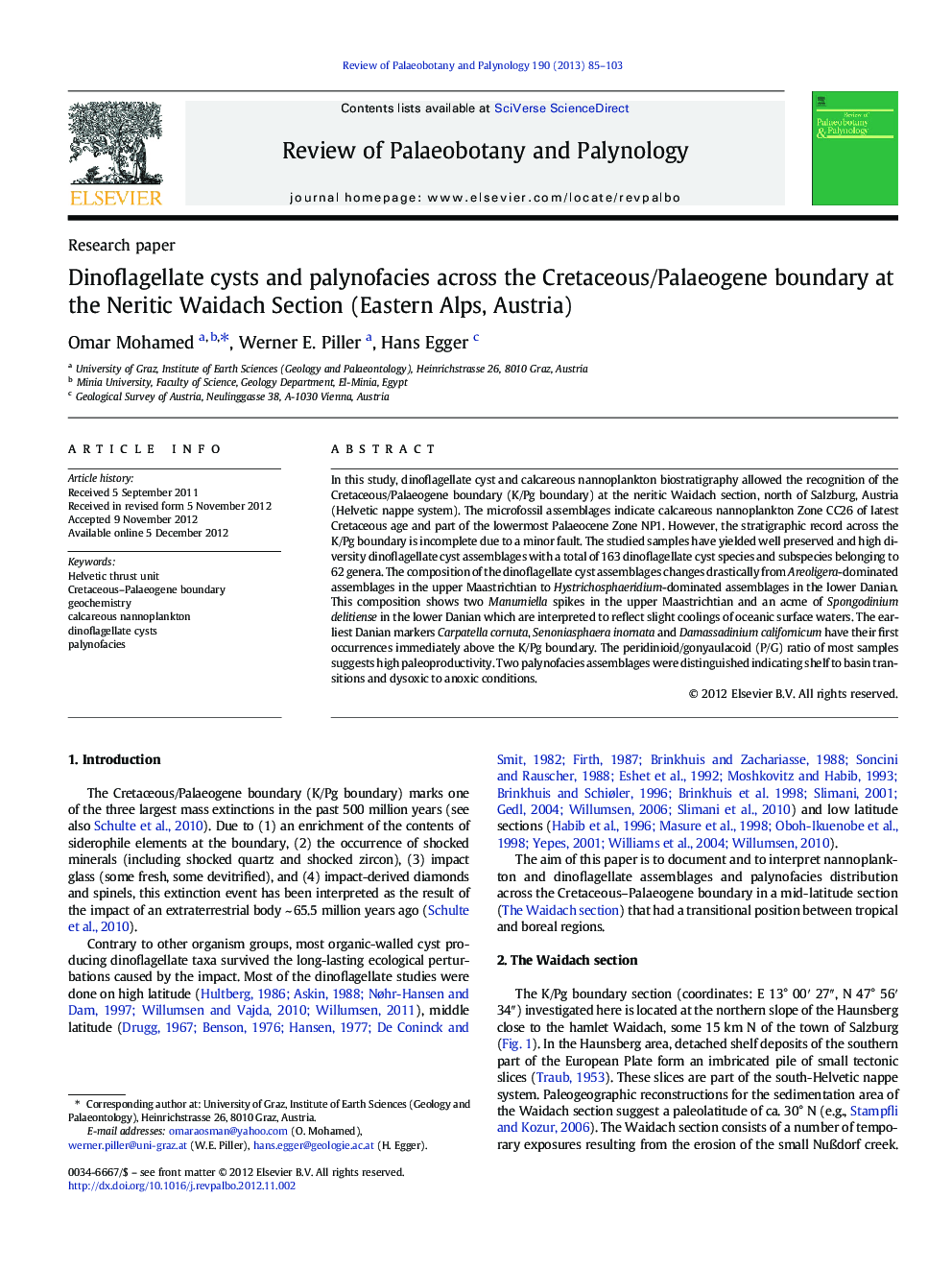| Article ID | Journal | Published Year | Pages | File Type |
|---|---|---|---|---|
| 4750448 | Review of Palaeobotany and Palynology | 2013 | 19 Pages |
In this study, dinoflagellate cyst and calcareous nannoplankton biostratigraphy allowed the recognition of the Cretaceous/Palaeogene boundary (K/Pg boundary) at the neritic Waidach section, north of Salzburg, Austria (Helvetic nappe system). The microfossil assemblages indicate calcareous nannoplankton Zone CC26 of latest Cretaceous age and part of the lowermost Palaeocene Zone NP1. However, the stratigraphic record across the K/Pg boundary is incomplete due to a minor fault. The studied samples have yielded well preserved and high diversity dinoflagellate cyst assemblages with a total of 163 dinoflagellate cyst species and subspecies belonging to 62 genera. The composition of the dinoflagellate cyst assemblages changes drastically from Areoligera-dominated assemblages in the upper Maastrichtian to Hystrichosphaeridium-dominated assemblages in the lower Danian. This composition shows two Manumiella spikes in the upper Maastrichtian and an acme of Spongodinium delitiense in the lower Danian which are interpreted to reflect slight coolings of oceanic surface waters. The earliest Danian markers Carpatella cornuta, Senoniasphaera inornata and Damassadinium californicum have their first occurrences immediately above the K/Pg boundary. The peridinioid/gonyaulacoid (P/G) ratio of most samples suggests high paleoproductivity. Two palynofacies assemblages were distinguished indicating shelf to basin transitions and dysoxic to anoxic conditions.
► Dinocysts and Palynofacies study at the K/Pg boundary north of Salzburg (Austria) ► Well preserved and high diverse dinoflagellate cyst assemblages ► Two Manumiella spikes were recorded in the upper Maastrichtian. ► An acme of Spongodinium delitiense was recorded in the lower Danian. ► Two palynofacies assemblages were distinguished in Waidach section.
